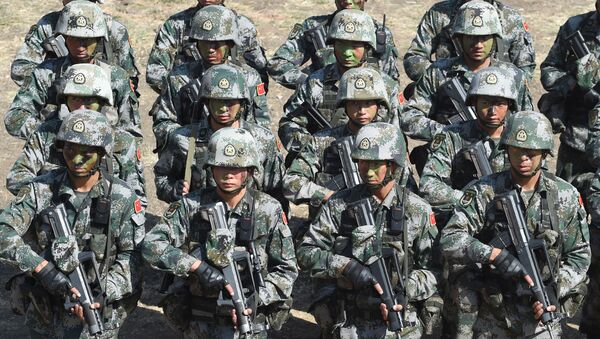Indian Defence Minister Rajnath Singh, who met General Wei Fenghe, State Councillor and Defence Minister of China on the sidelines of a Shanghai Cooperation Organisation (SCO) meeting in Moscow, told his counterpart that the actions of Chinese troops, including amassing large numbers of soldiers, their "aggressive behaviour", and attempts to unilaterally alter the status quo were in violation of bilateral agreements between the two nations.
RM emphasised that the actions of the Chinese troops, including amassing of large number of troops, their aggressive behaviour and attempts to unilaterally alter the status quo were in violation of the bilateral agreements.
— रक्षा मंत्री कार्यालय/ RMO India (@DefenceMinIndia) September 5, 2020
The minister told his Chinese counterpart that Indian troops have always taken a very responsible approach towards border management, but at the same time there should also be no doubt about their determination to protect the country's sovereignty and territorial integrity.
RM stated clearly that while the Indian troops had always taken a very responsible approach towards border management, but at the same time there should also be no doubt about our determination to protect India’s sovereignty and territorial integrity.
— रक्षा मंत्री कार्यालय/ RMO India (@DefenceMinIndia) September 5, 2020
Rajnath Singh suggested it was important that the Chinese side work on a complete disengagement of its troops from all friction points as soon as possible, including Pangong Lake as well as de-escalation in the border areas in accordance with bilateral agreements and protocols.
On the other hand, Indian Foreign Secretary Harsh Vardhan Shringla said the current border situation is "one of the most serious challenges" India is facing.
"This is one of the most serious challenges facing us in recent years with casualities on this border after over 40 years. We are engaged with China both through military and diplomatic channels on this, and remain firmly committed to resolving all outstanding issues through dialogue", Shringla said during a lecture organised by the Indian Council of World Affairs, a New Delhi-based government think tank.
Meanwhile, China has blamed India for the current situation along the border in eastern Ladakh. In a statement after the meeting of the two defence ministers, Beijing said "China cannot lose an inch of its territory and its armed forces are fully determined, capable, and confident in safeguarding national sovereignty and territorial integrity".
On 4 September, Chief of the Indian Army General Manoj Mukund Naravane said the situation along India-China border in Ladakh was delicate, but under control. General Naravane told the media during a visit to the frontier areas in the region, that Indian troops are prepared to take "preventive action" to avoid any further standoff with China.
The loosely-demarcated Line of Actual Control (LAC) is mainly a land border in most regions, but in the Pangong Tso area in eastern Ladakh it passes through a lake.
India controls the western portion of the 45-km lake, while the rest (about 119-km) is under Chinese control. Most of the clashes between the two countries have taken place in the Galwan Valley.





